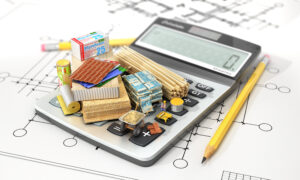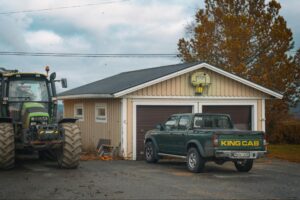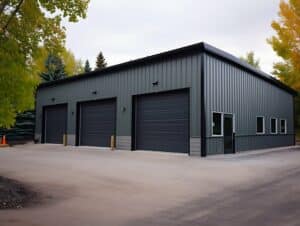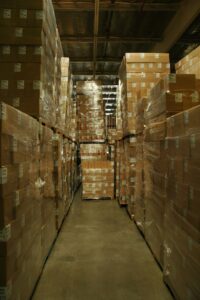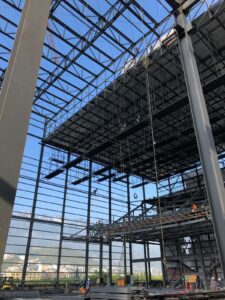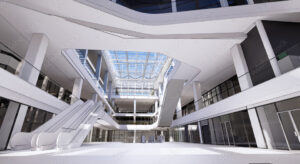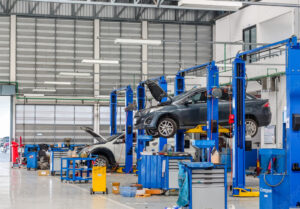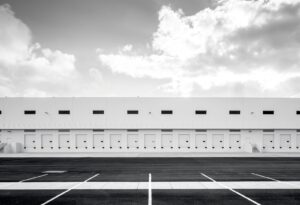The 100 x 100 steel building has become increasingly popular, driven by its versatility, cost-effectiveness and economic advantages. Offering 10,000 square feet of column-free interiors, the 100×100 steel building provides a blank canvas for customization, making it suitable for everything from warehouses and manufacturing plants to recreational facilities and retail spaces
According to the Metal Building Manufacturers Association (MBMA), steel building systems now account for over 50% of new low-rise, non-residential buildings in the U.S., underscoring their widespread acceptance and growing demand.
Statistics further highlight the growing popularity of steel buildings. The U.S. structural steel market was valued at USD 117.12 billion in 2023 and is projected to grow at a compound annual growth rate (CAGR) of 5.9% from 2024 to 2030.
In this article, we will explore the basics of steel building costs, use cases of 100 x 100 steel buildings, factors influencing prices, cost comparisons with other building materials, and ways to reduce steel building costs.
Table of Contents
- Use Cases for 100×100 Steel Buildings
- Overview of Steel Building Costs
- Costs for a 100 x 100 Steel Building
- Ongoing Costs for a 100 x 100 Steel Building
- Cost Comparisons with Other Building Materials
- Ways to Reduce Steel Building Costs
- Conclusion
- Frequently Asked Questions
Use Cases for 100×100 Steel Buildings
The 100×100 steel building offers a spacious and highly functional footprint, making it a popular choice for a variety of purposes. Here are some of the most common use cases for this size steel building:
- Industrial and Manufacturing: The wide-open space and sturdy construction of a 100×100 steel building make it ideal for housing industrial equipment, assembly lines, and warehouse operations. They can be used for manufacturing, processing, and storing large quantities of inventory.
- Storage: With 10,000 square feet of space, these buildings can be used for large-scale storage of anything from business inventory and vehicles to agricultural equipment.
- Commercial Uses: 100×100 steel buildings can be constructed for retail stores, gyms, and even office buildings. They offer a cost-effective and customizable option for commercial applications.
- Agricultural Buildings: These buildings are popular with ranchers and farmers who need space to store equipment, hay, livestock, or other agricultural products. The large doors on these buildings allow easy access for large machinery.
- Aviation: A 100×100 steel building can be large enough to house a private airplane or a small fleet of airplanes.
- Workshops and Garages: For hobbyists, mechanics, or businesses that need a large workspace, this dimension of steel building provides ample room for vehicles, tools, and projects.
- Multi-Use Buildings: Due to their open floor plan, these buildings can be partitioned to create separate work areas or living spaces. This makes them a good option for condominiums that combine residential and agricultural uses.
These are just a few examples, and the possibilities for using a 100×100 steel building are vast. They are a versatile and customizable option for a variety of needs.
Check out: Costs Of A 200×200 Metal Building
Overview of Steel Building Costs
The cost of steel buildings continues to reflect a complex interplay of economic factors, technological advancements, and market demands.
On average, steel building prices range from $17 to $20 per square foot for basic structures, while more complex or customized designs can cost $110 to $150 per square foot or more.
These figures represent a slight increase from previous years, primarily due to ongoing inflationary pressures and fluctuations in raw material costs.
However, the long-term cost-effectiveness of steel buildings, including their durability and lower maintenance requirements, continues to make them an attractive option for many businesses and organizations.
Several factors influence the final cost of a steel building.
- The size and complexity of the structure remain primary determinants, with larger buildings generally benefiting from economies of scale.
- Location plays a crucial role, affecting both material transportation costs and labor expenses.
- The level of customization, including insulation, interior finishes, and specialized features like climate control systems, can significantly impact the overall price.
It’s worth noting that while initial costs may be higher compared to some traditional construction methods, the rapid construction timelines of steel buildings – often 30% faster than conventional builds – can lead to substantial savings in labor costs and earlier occupancy.
Costs for a 100 x 100 Steel Building
Before construction begins, there are several initial costs to consider. These include land acquisition and site preparation, as well as material costs for the steel building.
When it comes to land acquisition, the location of your steel building project plays a crucial role in determining the cost of the land.
Factors such as proximity to urban areas, accessibility, and zoning regulations can all impact the price of the land.
Conducting a thorough analysis of potential sites can help you make an informed decision and potentially save costs in the long run.
Land Acquisition and Site Preparation
Purchasing the land for your steel building project is the first step. The cost of acquiring land will vary depending on location and availability.
Additionally, site preparation expenses, such as clearing and leveling the land, should be factored in.
Site preparation is a critical aspect of the construction process that should not be overlooked.
Clearing the land of any obstacles, grading the site to ensure proper drainage, and laying the foundation are all essential steps in preparing the land for the steel building.
Generally, site preparation involves clearing and grading the land, costing between $1,000 and $5,000. These costs can increase substantially if the site requires significant leveling or removal of trees and rocks.
Investing in quality site preparation can prevent future issues and ensure the longevity of your structure.
Material Costs for Steel Buildings
Material costs encompass the price of the steel components that make up the building, such as beams, columns, and roofing materials. The size and complexity of your steel building will affect material costs.
When considering material costs, it’s important to take into account factors such as the quality of the materials, sourcing options, and any additional features or customization you may require for your steel building.
Working closely with suppliers and contractors can help you navigate the various options available and make informed decisions that align with your budget and project goals.
Labor and Installation Costs
Installation and labor costs include expenses associated with hiring contractors or construction crews to erect your steel building. Labor costs can vary based on factors like the location, labor rates, and the complexity of the project.
Choosing the right team for the installation of your steel building is crucial to the success of the project.
Experienced contractors with a proven track record in steel construction can ensure that the building is erected safely, efficiently, and according to industry standards.
Collaborating closely with the construction team from the planning stages to completion can help streamline the process and minimize any unexpected costs or delays.
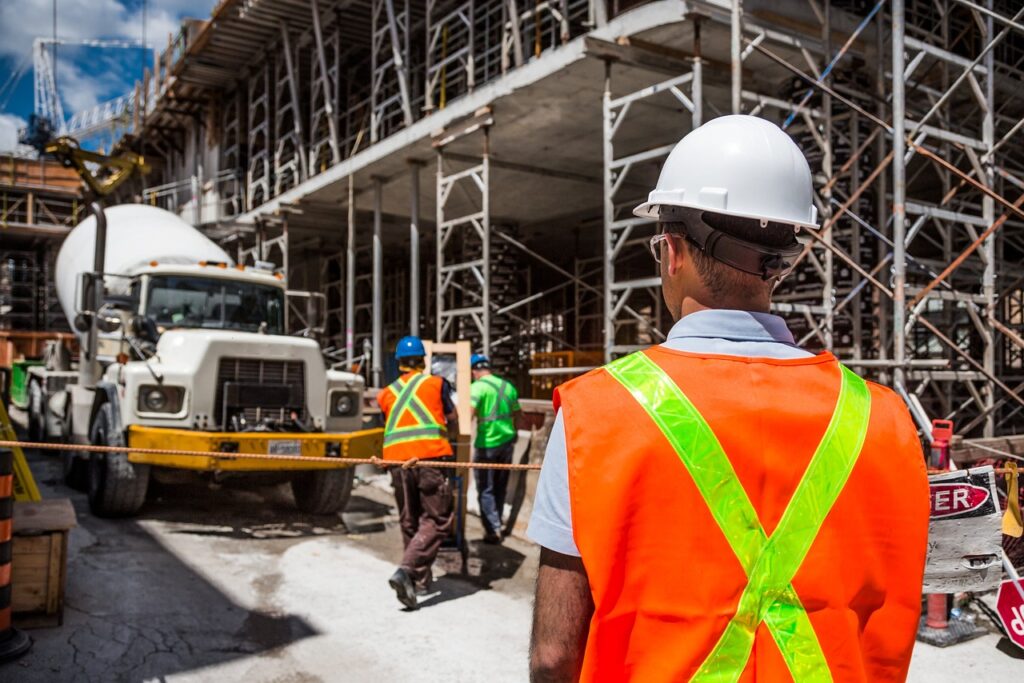
Ongoing Costs for a 100 x 100 Steel Building
In addition to the initial costs, it is important to consider the ongoing expenses associated with owning a 100 x 100 steel building.
When it comes to maintenance and repair expenses, it’s crucial to stay on top of regular upkeep and address any issues promptly.
Regular inspections of the building’s structure, roof, and foundation can help catch potential problems early, saving you both time and money in the long run.
Investing in high-quality materials and professional maintenance services can also contribute to the durability and resilience of your steel building.
Check out: Costs For A 100 X 200 Steel Building
Maintenance and Repair Expenses
Regular maintenance and occasional repairs are necessary to ensure the longevity and safety of your steel building. Budgeting for these expenses is critical to keep your building in optimal condition.
Furthermore, considering the environmental factors that may impact your steel building, such as extreme weather conditions or corrosive elements, can help you anticipate and mitigate potential maintenance issues.
Implementing preventive measures, such as applying protective coatings or ensuring proper drainage systems, can enhance the longevity of your building and reduce the frequency of repair needs.
Check out: Care And Maintenance Tips For Your Steel Building
Insurance and Tax Considerations
Insuring your steel building is essential to protect your investment in the event of damage or loss.
Choosing the right insurance coverage that aligns with the specific risks associated with your building’s location and usage is key to safeguarding your financial interests.
Additionally, staying informed about any changes in insurance regulations or requirements can help you adjust your coverage accordingly to maintain adequate protection.
When it comes to tax considerations, consulting with a financial advisor or tax professional can provide valuable insights into potential deductions or incentives available to steel building owners.
Understanding the tax implications of owning a steel building can help you optimize your financial planning strategies and maximize your savings.
By staying proactive and informed about both insurance and tax matters, you can effectively manage the ongoing costs of owning a 100 x 100 steel building.
Cost Comparisons with Other Building Materials
Comparing the costs of steel buildings with other common building materials can help you determine which option best suits your needs and budget.
When evaluating building materials, it’s essential to consider not only the initial cost but also factors such as maintenance, longevity, and construction time.
Steel buildings are known for their durability and long lifespan, making them a cost-effective choice in the long run.
While the upfront cost of steel may be higher than some other materials, the minimal maintenance requirements and resistance to elements like fire and pests can result in significant savings over time.
Steel vs. Wood Building Costs
When comparing steel and wood building costs, initial expenses are a significant factor. Steel buildings generally have higher upfront costs for steel framing. In contrast, wood framing is more economical initially.
This price difference is due to the production and transportation processes involved in steel manufacturing. They are more complex and costly than those for wood.
However, the long-term costs of steel buildings can be lower due to their durability and minimal maintenance requirements.
Steel structures are resistant to pests, rot, and fire, significantly reducing the need for repairs and replacements over time.
While initially cheaper, wood buildings are more susceptible to environmental damage. They typically require more maintenance, which can increase costs in the long run.
Additionally, steel buildings often have quicker assembly times due to prefabricated parts, which can reduce labor costs.
Check out: Metal Buildings Vs. Wood Buildings: A Comparative Analysis
Steel vs. Concrete Building Costs
Concrete buildings offer excellent durability but can be more expensive to construct compared to steel buildings.
Steel buildings generally require less labor and can be erected faster, potentially saving on overall construction costs.
Steel’s flexibility in design and construction allows for more efficient use of space and customization options. This adds value to the overall investment.
Ways to Reduce Steel Building Costs
There are several strategies you can employ to reduce the overall costs of your 100 x 100 steel building project.
Choosing Economical Design Options
Opting for a simple, straightforward design can help minimize costs. Avoiding unnecessary design complexities can result in significant savings without compromising the functionality and aesthetics of your building.
Consider utilizing standard sizes and shapes for your steel building components. This can help reduce fabrication costs as custom sizes often require more labor and materials.
Additionally, incorporating energy-efficient design elements such as proper insulation and natural lighting can lead to long-term cost savings.
Opting for Prefabricated Steel Buildings
Prefabricated steel buildings provide a cost-effective and efficient construction solution. With pre-engineered components, the manufacturing process is streamlined, reducing labor and material costs.
Explore the option of using recycled steel for your building project. Not only is recycled steel environmentally friendly, but it can also be more cost-effective than new steel materials.
By choosing recycled steel, you can contribute to sustainability efforts while keeping your project budget-friendly.
Saving on Labor Costs with DIY Installation
If you have the necessary skills and time, consider a do-it-yourself (DIY) installation. This can save on labor costs but requires extensive planning, knowledge, and expertise in construction.
Before embarking on a DIY steel building project, ensure you have access to the right tools and equipment.
Proper safety measures should also be a top priority to prevent accidents and ensure a successful construction process.
Consider enlisting the help of friends or family members to make the DIY installation more manageable and efficient.
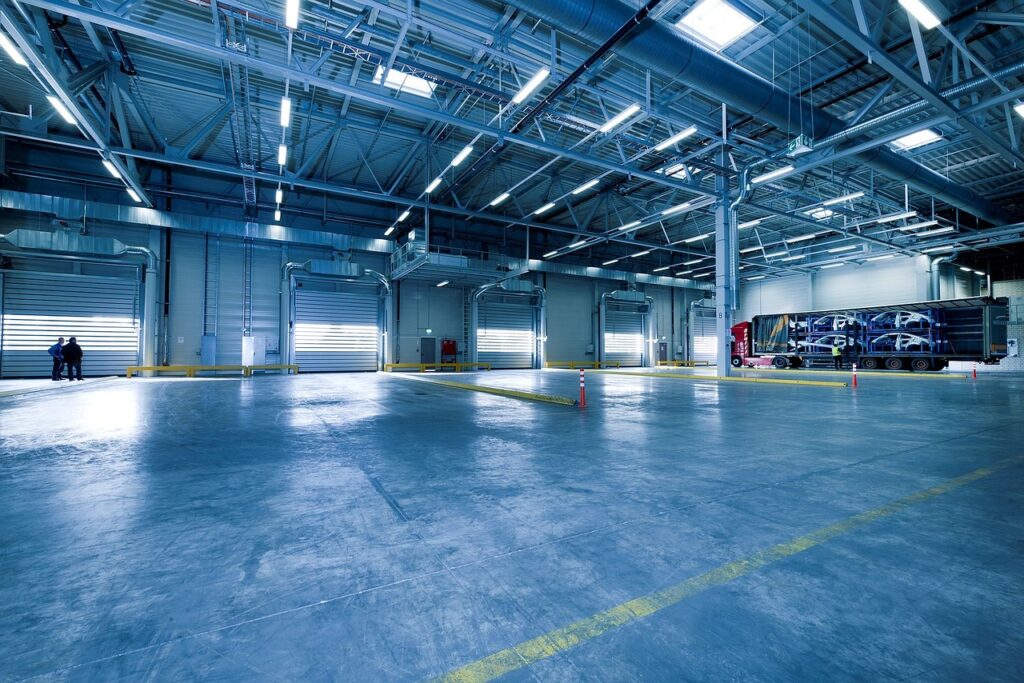
Conclusion
Understanding the costs of a 100 x 100 steel building is essential for any construction project.
By considering the factors influencing prices, breaking down the costs, and exploring ways to reduce expenses, you can make informed decisions and budget effectively.
Whether comparing costs with other building materials or exploring cost-saving measures, careful planning and research are key to a successful and cost-effective steel building project.
SteelCo has 23+ years in dropshipping prefabricated metal building materials nationwide, ensuring you have the necessary customizable kits to construct your ideal 100 x 100 steel building.
Our expertise in custom prefab steel structures ensures that your requirements for steel panels, framing, roofing, and other material needs are met.
We work with suppliers that are MBMA, AISC, and AISI compliant, ensuring you receive the highest-quality steel materials. Learn more about our metal building types.
—————–
Frequently Asked Questions
What is the average cost of a 100 x 100 steel building?
Depending on factors such as the price of steel, customization options, and location, the cost of a 100 x 100 steel building typically ranges between $170,000 and $200,000 for building materials. The overall cost of construction is around $110 to $150 per square foot.
How do customization and additional features affect the overall cost?
Customization and additional features can substantially increase the overall cost. For example, adding high-quality insulation, climate control systems, interior partitions, and aesthetic improvements can raise the price by 50% or more of the base cost.
These enhancements are often necessary for specific applications, such as maintaining energy efficiency and comfort in commercial and industrial settings.
Are steel buildings environmentally friendly?
Yes, steel buildings are environmentally friendly. Steel is 100% recyclable, and buildings constructed from steel can earn points towards LEED certification. Energy-efficient designs, such as proper insulation and HVAC systems, contribute to sustainability by reducing energy consumption.
Can a 100 x 100 steel building be expanded in the future?
Yes, one of the benefits of steel buildings is their flexibility. They can be easily expanded by adding additional columns or support, making them a scalable solution for growing businesses.
Are there height restrictions for a 100 x 100 steel building?
There are generally no inherent height restrictions, as these structures can be customized to meet specific needs. However, the height of the building is often determined by local zoning regulations and building codes. It’s essential to check with local authorities to ensure compliance with any height limitations in your area.
How long does it take to erect a 100 x 100 steel building?
The construction time can vary based on the complexity, customizations, and project size. On average, it can take anywhere from 11 weeks for small projects (<5k SF) and up to 8 months for large projects (>50-100k SF).


